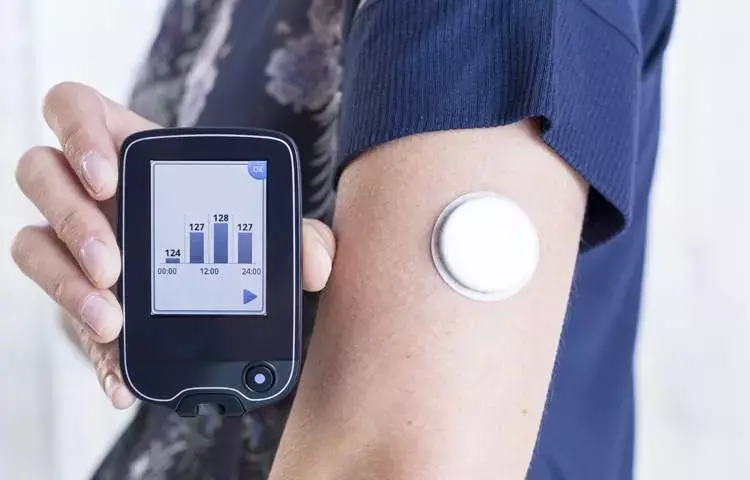- Home
- Medical news & Guidelines
- Anesthesiology
- Cardiology and CTVS
- Critical Care
- Dentistry
- Dermatology
- Diabetes and Endocrinology
- ENT
- Gastroenterology
- Medicine
- Nephrology
- Neurology
- Obstretics-Gynaecology
- Oncology
- Ophthalmology
- Orthopaedics
- Pediatrics-Neonatology
- Psychiatry
- Pulmonology
- Radiology
- Surgery
- Urology
- Laboratory Medicine
- Diet
- Nursing
- Paramedical
- Physiotherapy
- Health news
- Fact Check
- Bone Health Fact Check
- Brain Health Fact Check
- Cancer Related Fact Check
- Child Care Fact Check
- Dental and oral health fact check
- Diabetes and metabolic health fact check
- Diet and Nutrition Fact Check
- Eye and ENT Care Fact Check
- Fitness fact check
- Gut health fact check
- Heart health fact check
- Kidney health fact check
- Medical education fact check
- Men's health fact check
- Respiratory fact check
- Skin and hair care fact check
- Vaccine and Immunization fact check
- Women's health fact check
- AYUSH
- State News
- Andaman and Nicobar Islands
- Andhra Pradesh
- Arunachal Pradesh
- Assam
- Bihar
- Chandigarh
- Chattisgarh
- Dadra and Nagar Haveli
- Daman and Diu
- Delhi
- Goa
- Gujarat
- Haryana
- Himachal Pradesh
- Jammu & Kashmir
- Jharkhand
- Karnataka
- Kerala
- Ladakh
- Lakshadweep
- Madhya Pradesh
- Maharashtra
- Manipur
- Meghalaya
- Mizoram
- Nagaland
- Odisha
- Puducherry
- Punjab
- Rajasthan
- Sikkim
- Tamil Nadu
- Telangana
- Tripura
- Uttar Pradesh
- Uttrakhand
- West Bengal
- Medical Education
- Industry
Real-time CGM use tied to better glycemic outcomes in type 1 diabetes than intermittently scanned CGM: Study

Canada: Type 1 diabetes (T1D) patients who were users of real-time continuous glucose monitoring (CGM) had a significantly greater reduction in HbA1c at 6-12 months versus intermittently scanned CGM users, according to findings from a real-world analysis.
"In addition, real-time CGM users had lower time below range, significantly greater time in range, and lower glycemic variability compared to the matched cohort," Alexander Abitbol, LMC Diabetes & Endocrinology, Toronto, Ontario, Canada, and colleagues write in their study.
Previous studies have shown that in patients with T1D, both real-time CGM and intermittently scanned CGM improve glycemic outcomes. The aim of the study, published in Diabetic Medicine, was to compare real-world glycemic outcomes at 6-12 months in a propensity score matched cohort of CGM naïve adults with T1D who initiated a real-time CGM (rtCGM) or an intermittently scanned CGM (isCGM).
The researchers used data from the Canadian LMC Diabetes Registry. Patients were eligible if they had a diagnosis of T1D >12 months, age ≥18 years, initiated a real-time CGM device or an intermittently scanned CGM, or maintained conventional self-measured blood glucose (SMBG) between January 2018 - December 2020.
HbA1c at 6 - 12 months in the matched real-time CGM and intermittently scanned CGM cohorts and in matched real-time CGM and SMBG cohorts was the primary endpoint. The primary outcome was evaluated using a multivariate linear regression model after adjusting for baseline HbA1c as a covariate.
For matching 187 real-time CGM and 230 intermittently scanned CGM patients were deemed eligible. there were 143 patients in each cohort after propensity score matching.
Based on the study, the researchers reported the following:
- Among the matched real time CGM and intermittently scanned CGM cohorts (n=143/cohort), rtCGM users had a significantly greater HbA1c benefit compared to isCGM users (adjusted difference, -3 mmol/mol).
- There was a significantly greater lowering of HbA1c for real-time CGM compared to intermittently scanned CGM when baseline HbA1c was < 69 mmol/mol (adjusted difference, -4 mmol/mol), and in MDI users (adjusted difference, -3 mmol/mol).
- The real-time CGM cohort had significantly greater time in range (58.3 ± 16.1% vs. 54.5 ± 17.1%), lower time below range (2.1 ± 2.7% vs. 6.1 ± 5.0%), and lower glycemic variability compared to the intermittently scanned CGM cohort.
"In this real-world analysis of adults with T1D, users of real-time CGM had a significantly greater reduction in HbA1c at 6-12 months compared to intermittently scanned CGM," the authors wrote.
"Also, rtCGM users had significantly greater time in range, lower time below range, and lower glycemic variability, compared to a matched cohort of isCGM users."
Reference:
The study titled, "Real-world glycemic outcomes in adult patients with type 1 diabetes using a real-time continuous glucose monitor compared to an intermittently scanned glucose monitor: a retrospective observational study from the Canadian LMC Diabetes Registry (REAL-CGM-T1D)," was published in the journal Diabetic Medicine.
DOI: https://doi.org/10.1111/dme.14937
Dr Kamal Kant Kohli-MBBS, DTCD- a chest specialist with more than 30 years of practice and a flair for writing clinical articles, Dr Kamal Kant Kohli joined Medical Dialogues as a Chief Editor of Medical News. Besides writing articles, as an editor, he proofreads and verifies all the medical content published on Medical Dialogues including those coming from journals, studies,medical conferences,guidelines etc. Email: drkohli@medicaldialogues.in. Contact no. 011-43720751


